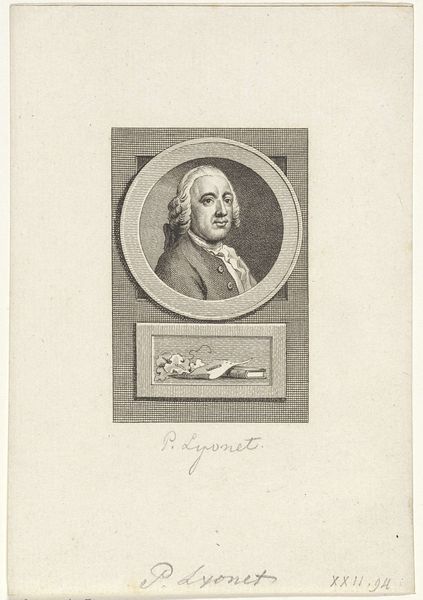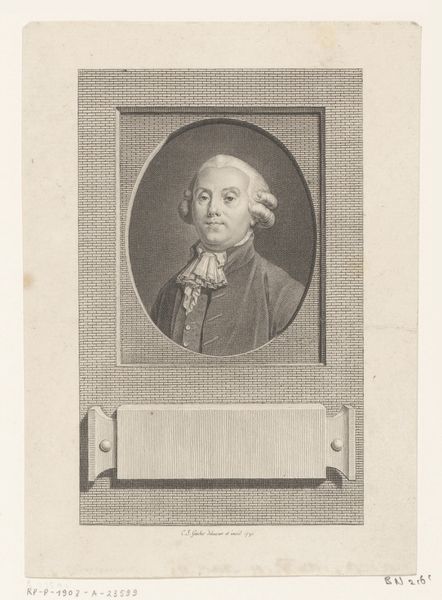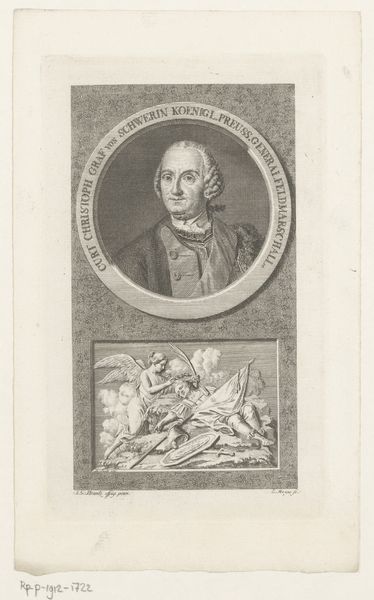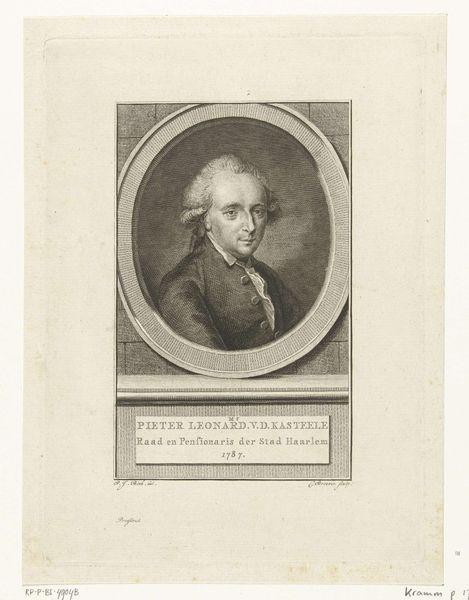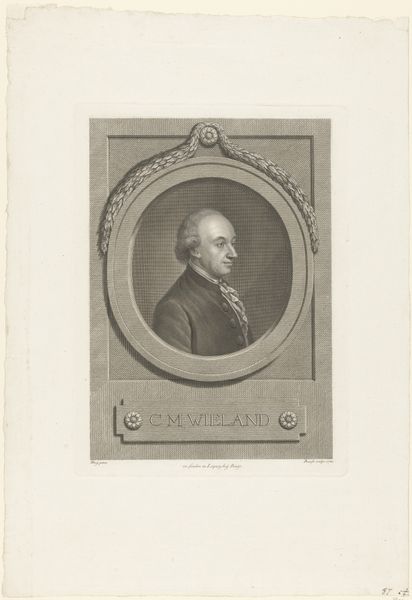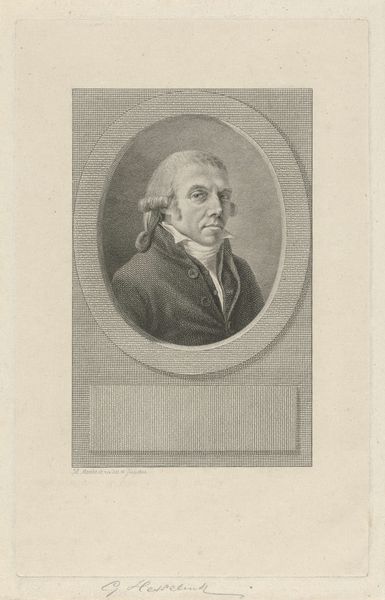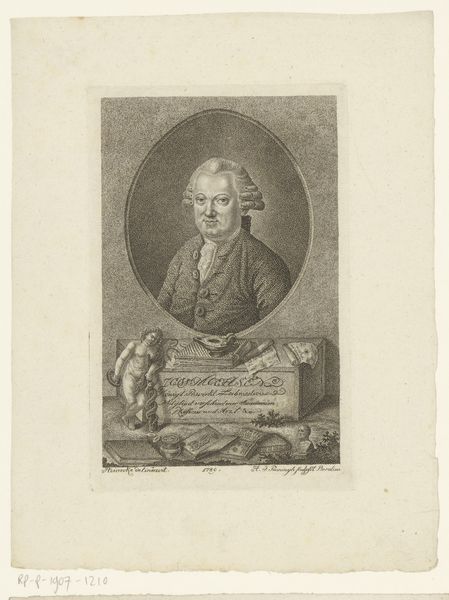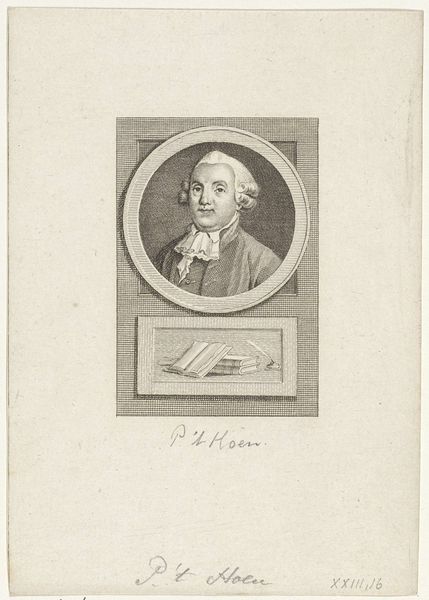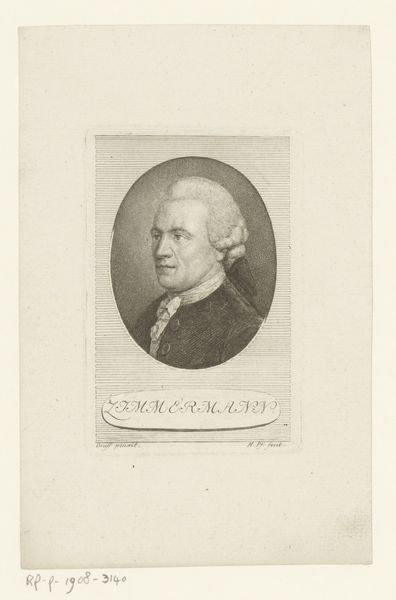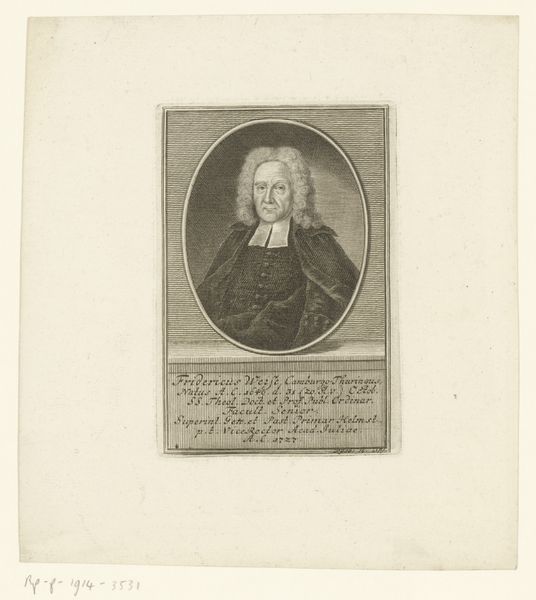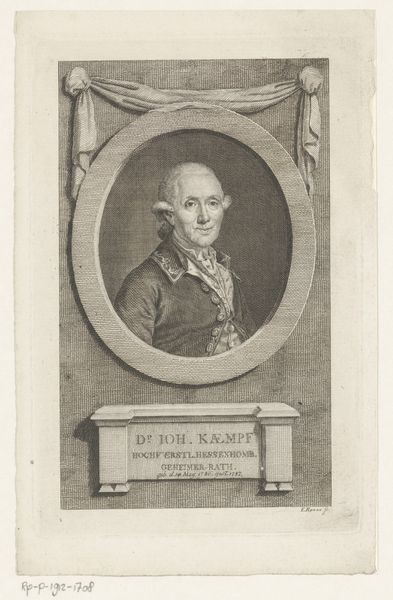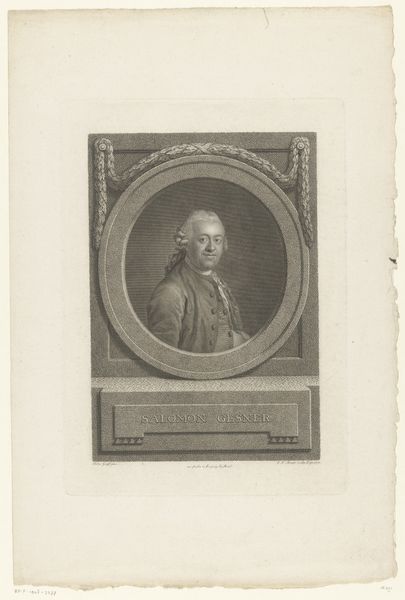
print, engraving
#
portrait
#
neoclacissism
# print
#
history-painting
#
engraving
Dimensions: height 128 mm, width 102 mm
Copyright: Rijks Museum: Open Domain
Editor: This is a print from between 1783 and 1795 by Reinier Vinkeles, entitled "Portret van IJsbrand van Hamelsveld," currently at the Rijksmuseum. It's an engraving depicting a distinguished gentleman. It gives me a very formal, almost stoic impression. What stands out to you in this piece? Curator: Immediately, I'm drawn to the visual language—the careful rendering of Van Hamelsveld, framed in this oval, feels consciously classical. Note the symbolic elements below, the book, quill and ink. This cluster signifies knowledge, and more subtly perhaps, the weight of scholarship. Editor: So the objects beneath the portrait add a layer of meaning? Curator: Absolutely. They speak to Van Hamelsveld’s identity, likely a scholar or clergyman given his garments and this careful arrangement of scholastic objects. But it’s more than just biography. Notice the laurel branch resting on the book – do you recall what that symbolizes? Editor: Hmm, it seems like it represents victory or success? Curator: Precisely. These symbols carry cultural weight, reflecting Neoclassical ideals about achievement and intellectualism. How do you feel this impacts our interpretation of the figure portrayed? Editor: It shifts my perspective. The portrait becomes less about simply depicting a person, and more about presenting an *idea* of enlightenment and academic success. The engraving almost transforms him into a symbol. Curator: Exactly. Vinkeles’ choice of imagery gives a cultural memory and continuity to Van Hamelsveld. Think about how different symbolic languages might be employed today, in our own portraits and representations of people in the media! Editor: That's fascinating, I hadn't considered how much symbolic meaning can be embedded in what appears to be a straightforward portrait. It shows how even simple images can reveal cultural values of that era. Curator: And that is the beauty of understanding iconography. It enables one to unravel those cultural values.
Comments
No comments
Be the first to comment and join the conversation on the ultimate creative platform.
